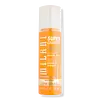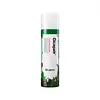What's inside
What's inside
 Key Ingredients
Key Ingredients

 Benefits
Benefits

 Concerns
Concerns

No concerns
 Ingredients Side-by-side
Ingredients Side-by-side

Water
Skin ConditioningAloe Barbadensis Leaf Juice
Skin ConditioningGlycerin
HumectantCitrus Aurantium Amara Flower Water
MaskingPEG-40 Hydrogenated Castor Oil
EmulsifyingPEG-8 Dimethicone
EmulsifyingBabassu Oil Glycereth-8 Esters
EmulsifyingCitrus Aurantium Dulcis Peel Oil
MaskingPanax Quinquefolius Root Extract
AstringentSodium Hyaluronate
HumectantCurcuma Longa Root Extract
MaskingLecithin
EmollientCaffeine
Skin ConditioningCoffea Arabica Seed Extract
MaskingSodium Benzoate
MaskingCitric Acid
BufferingPotassium Sorbate
PreservativePhenoxyethanol
PreservativeWater, Aloe Barbadensis Leaf Juice, Glycerin, Citrus Aurantium Amara Flower Water, PEG-40 Hydrogenated Castor Oil, PEG-8 Dimethicone, Babassu Oil Glycereth-8 Esters, Citrus Aurantium Dulcis Peel Oil, Panax Quinquefolius Root Extract, Sodium Hyaluronate, Curcuma Longa Root Extract, Lecithin, Caffeine, Coffea Arabica Seed Extract, Sodium Benzoate, Citric Acid, Potassium Sorbate, Phenoxyethanol
Water
Skin ConditioningPropanediol
SolventCentella Asiatica Extract
CleansingMadecassoside
AntioxidantChondrus Crispus Extract
Skin ConditioningSaccharum Officinarum Extract
MoisturisingLavandula Angustifolia Oil
MaskingRosmarinus Officinalis Leaf Oil
MaskingCitrus Grandis Peel Oil
MaskingAnthemis Nobilis Flower Oil
MaskingSea Water
HumectantZanthoxylum Piperitum Fruit Extract
Skin ConditioningAchillea Millefolium Extract
CleansingAlchemilla Vulgaris Extract
AstringentAnastatica Hierochuntica Extract
AstringentMalva Sylvestris Extract
AstringentMelissa Officinalis Leaf Extract
Skin ConditioningMentha Piperita Leaf Extract
Skin ConditioningPrimula Veris Extract
Skin ConditioningVeronica Officinalis Extract
Skin ConditioningHouttuynia Cordata Extract
Skin ConditioningLactobacillus Ferment
Skin ConditioningChrysanthemum Coccineum Flower Extract
Skin ConditioningEucalyptus Citriodora Oil
MaskingGlycerin
HumectantButylene Glycol
HumectantPolyglyceryl-2 Oleate
EmulsifyingPEG-60 Hydrogenated Castor Oil
EmulsifyingDipropylene Glycol
HumectantOctyldodeceth-16
EmulsifyingDipotassium Glycyrrhizate
HumectantEthylhexylglycerin
Skin ConditioningSodium Citrate
BufferingCitric Acid
BufferingPanthenol
Skin ConditioningAsiaticoside
AntioxidantSodium PCA
HumectantAsiatic Acid
Skin ConditioningHydrogenated Lecithin
EmulsifyingMadecassic Acid
Skin ConditioningMagnesium PCA
Humectant1,2-Hexanediol
Skin ConditioningZinc PCA
HumectantPEG-40 Hydrogenated Castor Oil
EmulsifyingManganese PCA
HumectantSodium Hyaluronate
HumectantPhenoxyethanol
PreservativePotassium Sorbate
PreservativeDisodium EDTA
Water, Propanediol, Centella Asiatica Extract, Madecassoside, Chondrus Crispus Extract, Saccharum Officinarum Extract, Lavandula Angustifolia Oil, Rosmarinus Officinalis Leaf Oil, Citrus Grandis Peel Oil, Anthemis Nobilis Flower Oil, Sea Water, Zanthoxylum Piperitum Fruit Extract, Achillea Millefolium Extract, Alchemilla Vulgaris Extract, Anastatica Hierochuntica Extract, Malva Sylvestris Extract, Melissa Officinalis Leaf Extract, Mentha Piperita Leaf Extract, Primula Veris Extract, Veronica Officinalis Extract, Houttuynia Cordata Extract, Lactobacillus Ferment, Chrysanthemum Coccineum Flower Extract, Eucalyptus Citriodora Oil, Glycerin, Butylene Glycol, Polyglyceryl-2 Oleate, PEG-60 Hydrogenated Castor Oil, Dipropylene Glycol, Octyldodeceth-16, Dipotassium Glycyrrhizate, Ethylhexylglycerin, Sodium Citrate, Citric Acid, Panthenol, Asiaticoside, Sodium PCA, Asiatic Acid, Hydrogenated Lecithin, Madecassic Acid, Magnesium PCA, 1,2-Hexanediol, Zinc PCA, PEG-40 Hydrogenated Castor Oil, Manganese PCA, Sodium Hyaluronate, Phenoxyethanol, Potassium Sorbate, Disodium EDTA
 Reviews
Reviews

Ingredients Explained
These ingredients are found in both products.
Ingredients higher up in an ingredient list are typically present in a larger amount.
Citric Acid is an alpha hydroxy acid (AHA) naturally found in citrus fruits like oranges, lemons, and limes.
Like other AHAs, citric acid can exfoliate skin by breaking down the bonds that hold dead skin cells together. This helps reveal smoother and brighter skin underneath.
However, this exfoliating effect only happens at high concentrations (20%) which can be hard to find in cosmetic products.
Due to this, citric acid is usually included in small amounts as a pH adjuster. This helps keep products slightly more acidic and compatible with skin's natural pH.
In skincare formulas, citric acid can:
While it can provide some skin benefits, research shows lactic acid and glycolic acid are generally more effective and less irritating exfoliants.
Most citric acid used in skincare today is made by fermenting sugars (usually from molasses). This synthetic version is identical to the natural citrus form but easier to stabilize and use in formulations.
Read more about some other popular AHA's here:
Learn more about Citric AcidGlycerin is already naturally found in your skin. It helps moisturize and protect your skin.
A study from 2016 found glycerin to be more effective as a humectant than AHAs and hyaluronic acid.
As a humectant, it helps the skin stay hydrated by pulling moisture to your skin. The low molecular weight of glycerin allows it to pull moisture into the deeper layers of your skin.
Hydrated skin improves your skin barrier; Your skin barrier helps protect against irritants and bacteria.
Glycerin has also been found to have antimicrobial and antiviral properties. Due to these properties, glycerin is often used in wound and burn treatments.
In cosmetics, glycerin is usually derived from plants such as soybean or palm. However, it can also be sourced from animals, such as tallow or animal fat.
This ingredient is organic, colorless, odorless, and non-toxic.
Glycerin is the name for this ingredient in American English. British English uses Glycerol/Glycerine.
Learn more about GlycerinPeg-40 Hydrogenated Castor Oil is derived from castor oil and polyethylene glycol (PEG). It is used as a emollient and emulsifier.
As an emulsifier, it helps prevent ingredients from separating. It also helps make the other ingredients more soluble; it is often used to solubilize fragrances. This increases spreadability and elongates shelf life in a product.
Emollients help soothe and soften the skin. They do this by creating a protective film on your skin. This barrier helps trap moisture and keeps your skin hydrated. Emollients may be effective at treating dry or itchy skin.
This ingredient may or may not be vegan, depending on the source.
Peg-40 Hydrogenated Castor Oil may not be fungal-acne safe. We recommend speaking with a professional if you have any questions or concerns.
Learn more about PEG-40 Hydrogenated Castor OilPhenoxyethanol is a preservative that has germicide, antimicrobial, and aromatic properties. Studies show that phenoxyethanol can prevent microbial growth. By itself, it has a scent that is similar to that of a rose.
It's often used in formulations along with Caprylyl Glycol to preserve the shelf life of products.
Potassium Sorbate is a preservative used to prevent yeast and mold in products. It is commonly found in both cosmetic and food products.
This ingredient comes from potassium salt derived from sorbic acid. Sorbic acid is a natural antibiotic and effective against fungus.
Both potassium sorbate and sorbic acid can be found in baked goods, cheeses, dried meats, dried fruit, ice cream, pickles, wine, yogurt, and more.
You'll often find this ingredient used with other preservatives.
Learn more about Potassium SorbateSodium Hyaluronate is hyaluronic acid's salt form. It is commonly derived from the sodium salt of hyaluronic acid.
Like hyaluronic acid, it is great at holding water and acts as a humectant. This makes it a great skin hydrating ingredient.
Sodium Hyaluronate is naturally occurring in our bodies and is mostly found in eye fluid and joints.
These are some other common types of Hyaluronic Acid:
Learn more about Sodium HyaluronateWater. It's the most common cosmetic ingredient of all. You'll usually see it at the top of ingredient lists, meaning that it makes up the largest part of the product.
So why is it so popular? Water most often acts as a solvent - this means that it helps dissolve other ingredients into the formulation.
You'll also recognize water as that liquid we all need to stay alive. If you see this, drink a glass of water. Stay hydrated!
Learn more about Water